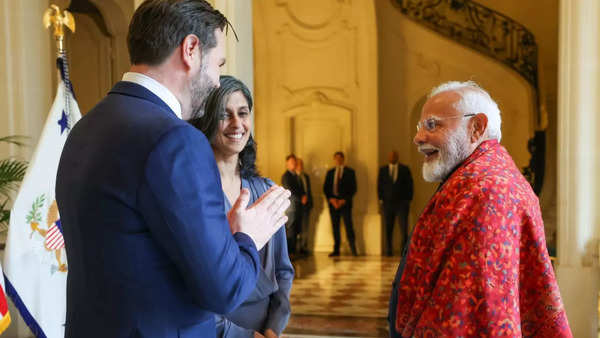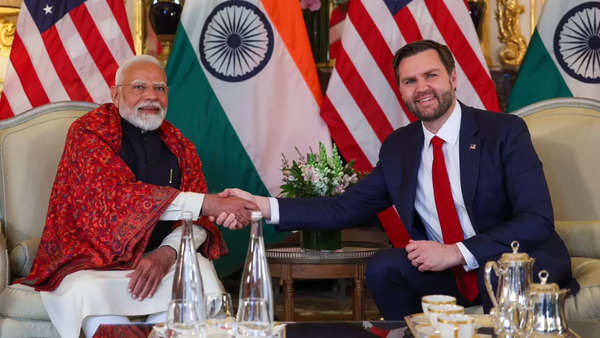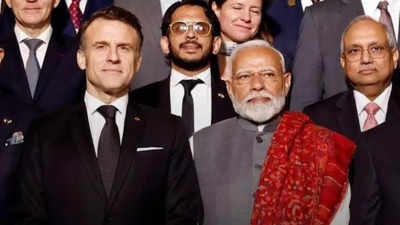Prime Minister Narendra Modi’s recent visit to Paris was marked by an exceptional style statement, his red Kani Shawl. Draped over his shoulders during key meetings, the shawl was not just an accessory but a tribute to India’s rich textile heritage, specifically the intricate craftsmanship of Kashmiri artisans. The Kani Shawl, known for its elaborate handwoven designs, is created thread by thread using tiny wooden spools called ‘Kanis’, a process that can take years to complete.

In his 112th ‘Mann Ki Baat’ address in July 2024, PM Modi praised the efforts of Kashmiri Kani Shawl artisans, who have worked tirelessly to popularise traditional handloom products, bringing attention to the value of preserving and promoting these age-old practices. His choice to wear the Kani Shawl during his Paris trip was not only a style decision but also a nod to the dedication and skill of these artisans.
Symbol of Kashmiri heritage
The Kani Shawl has been a symbol of Kashmiri heritage for centuries. Introduced in the 16th century, this traditional shawl is distinguished by its intricate floral, paisley, and geometric patterns. What makes the Kani Shawl truly remarkable is the weaving process. Artisans use wooden spools to weave the patterns into the fabric, with each shawl taking hundreds of hours to complete. The end result is a luxurious piece of textile art that is both delicate and enduring.
History of Kani Shawl
The history of Kani Shawls dates back to the 16th century, during the reign of the Mughal Emperor Akbar, when Kashmiri artisans were first introduced to the art of weaving these exquisite shawls. The name “Kani” is derived from the small wooden spools used in the weaving process, called ‘Kanis’. Initially, Kani Shawls were made from fine Pashmina wool, and their intricate designs drew inspiration from the natural beauty of Kashmir, including its flowers, trees, and intricate geometric patterns. The craft flourished under the Mughal and later the Afghan rule, reaching its peak during the 18th and 19th centuries. These shawls became highly prized in royal courts and were often worn by aristocrats as symbols of prestige and luxury. Despite facing challenges such as the decline in demand and the impact of modern machine-made textiles, Kani Shawl weaving has remained an important part of Kashmiri culture, with skilled artisans continuing the tradition to this day.

PM Modi’s red Kani Shawl, with its gold and orange paisley motifs, added a regal touch to his ensemble. Draped over a Bandhgala jacket, the shawl was the perfect balance of traditional craftsmanship and modern elegance. It was a statement that blended India’s rich heritage with global diplomacy, making a lasting impression on his Parisian counterparts. As he wore the shawl with pride, it was clear that PM Modi was showcasing the beauty of Indian craftsmanship to the world.


